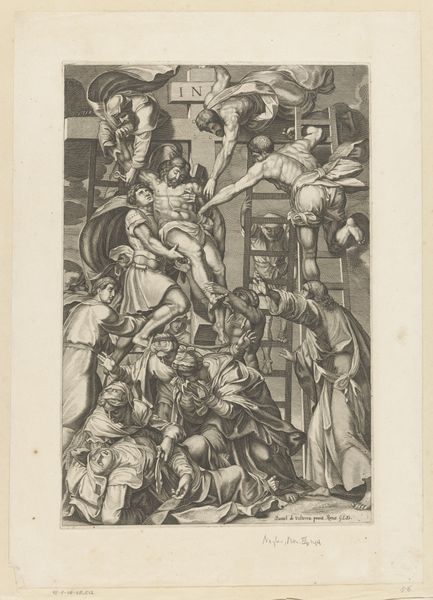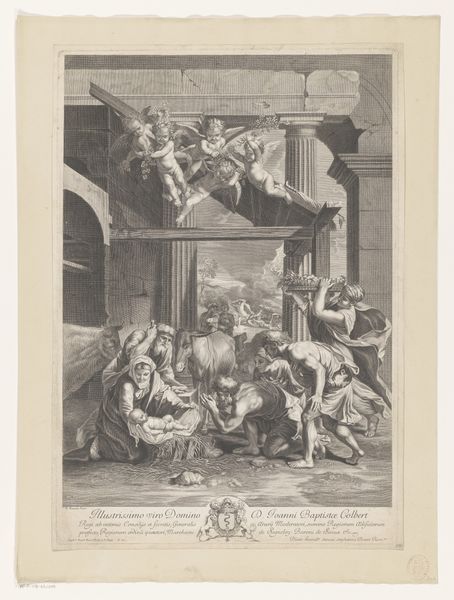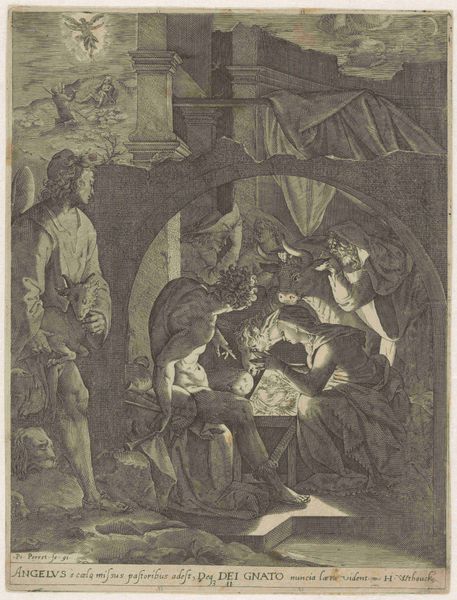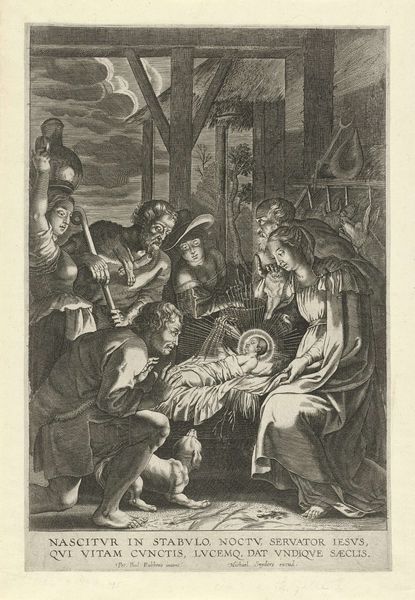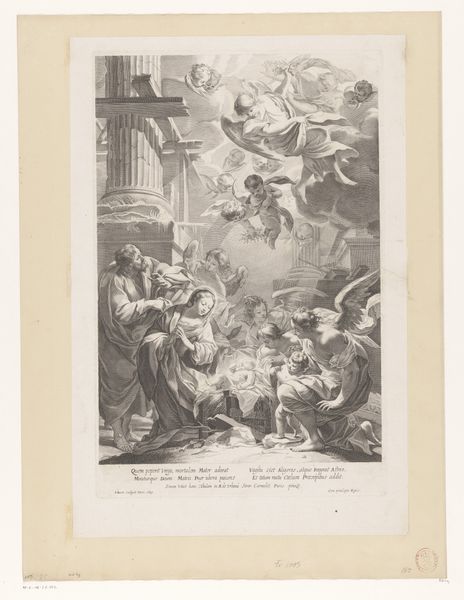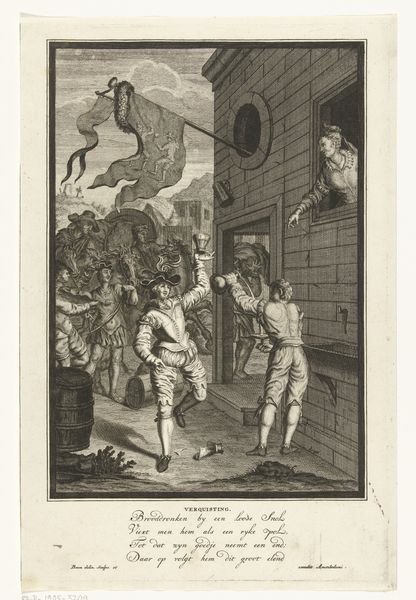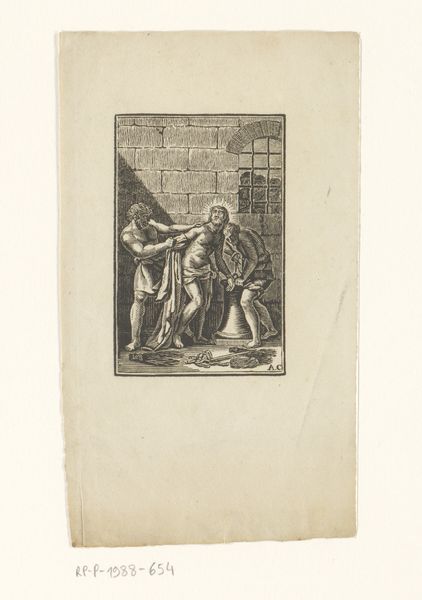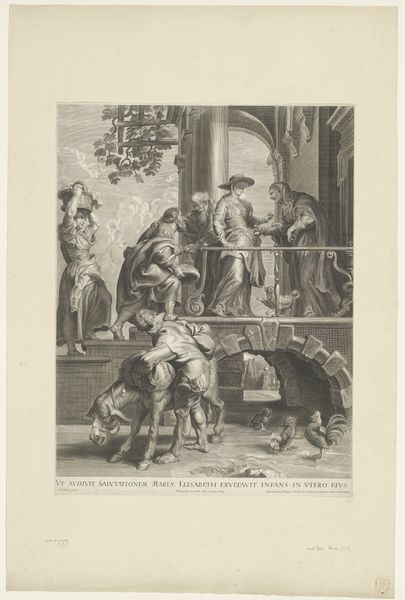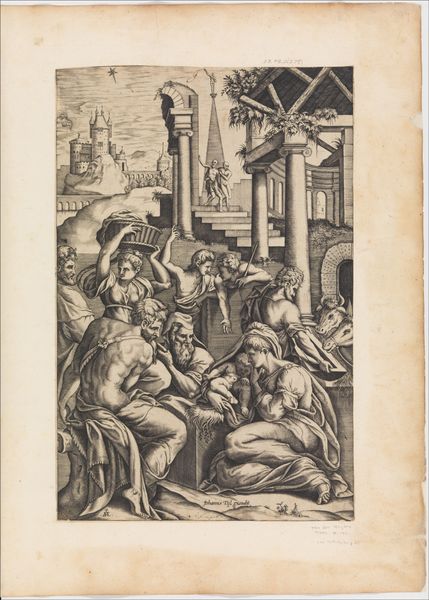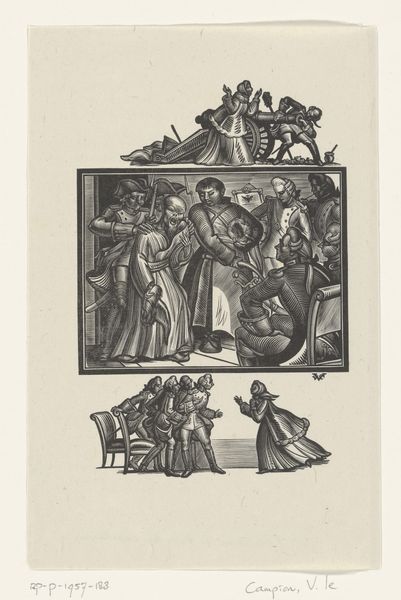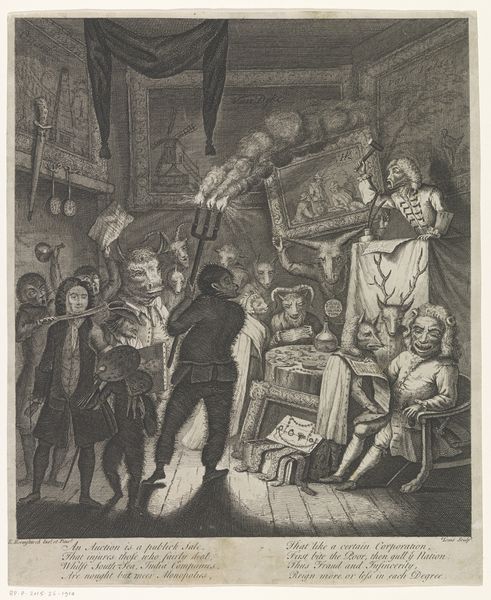
print, engraving
#
allegory
#
baroque
# print
#
old engraving style
#
figuration
#
11_renaissance
#
islamic-art
#
history-painting
#
engraving
Dimensions: height 484 mm, width 244 mm
Copyright: Rijks Museum: Open Domain
Curator: We’re standing now before "The Adoration of the Kings," an engraving dating from about 1630 to 1662. Editor: Immediately, I get a sense of controlled chaos, which sounds like a total contradiction, right? But the linear precision is offset by a swirl of figures crammed into this tight space. What’s happening here, exactly? Curator: The work depicts the biblical scene of the Magi, the three kings, visiting the newborn Jesus and presenting their gifts. Note the ruined classical architecture alongside what seem like figures drawn from across Europe. It represents the coming of Christianity to replace the old world order. Editor: So, these Magi were like, the original influencers bearing extravagant gifts! But that ruined structure… there's almost a dystopian feel. Then you've got these chubby cherubs cavorting up top, positively beaming down at the scene. It’s fascinating, like two completely different stories smashed together. Is that the artist messing with our heads? Curator: Well, not exactly. What you’re reacting to is typical of Baroque art where contrast and dynamism were key elements used to communicate complex religious ideas. And printmaking, with its accessibility and replicability, played a crucial role in disseminating such visual ideas across society. Think of it as mass media for the 17th century. Editor: Mass media alright. Though all the symbolism does create this sort of artistic gatekeeping, right? Unless you know the story, are you really in on the full message? Still, as a whole the picture manages to conjure the divine swooping into our chaotic reality. I love the high drama of it. Curator: I appreciate your take. For me, this engraving offers insights into the complex dynamics between religious narrative and political ambition. Art patronage played a central role, and engravings allowed those messages to circulate broadly and build consensus. Editor: Yeah, but forgetting all that, you could still say it’s kinda groovy, right? Curator: *laughs* I suppose we can agree on that, a visually arresting depiction of the eternal made fleetingly modern. Editor: Amen to that! There’s something enduring and timeless in how artists play with themes like these, in a sense bringing everything full circle, again and again.
Comments
No comments
Be the first to comment and join the conversation on the ultimate creative platform.

